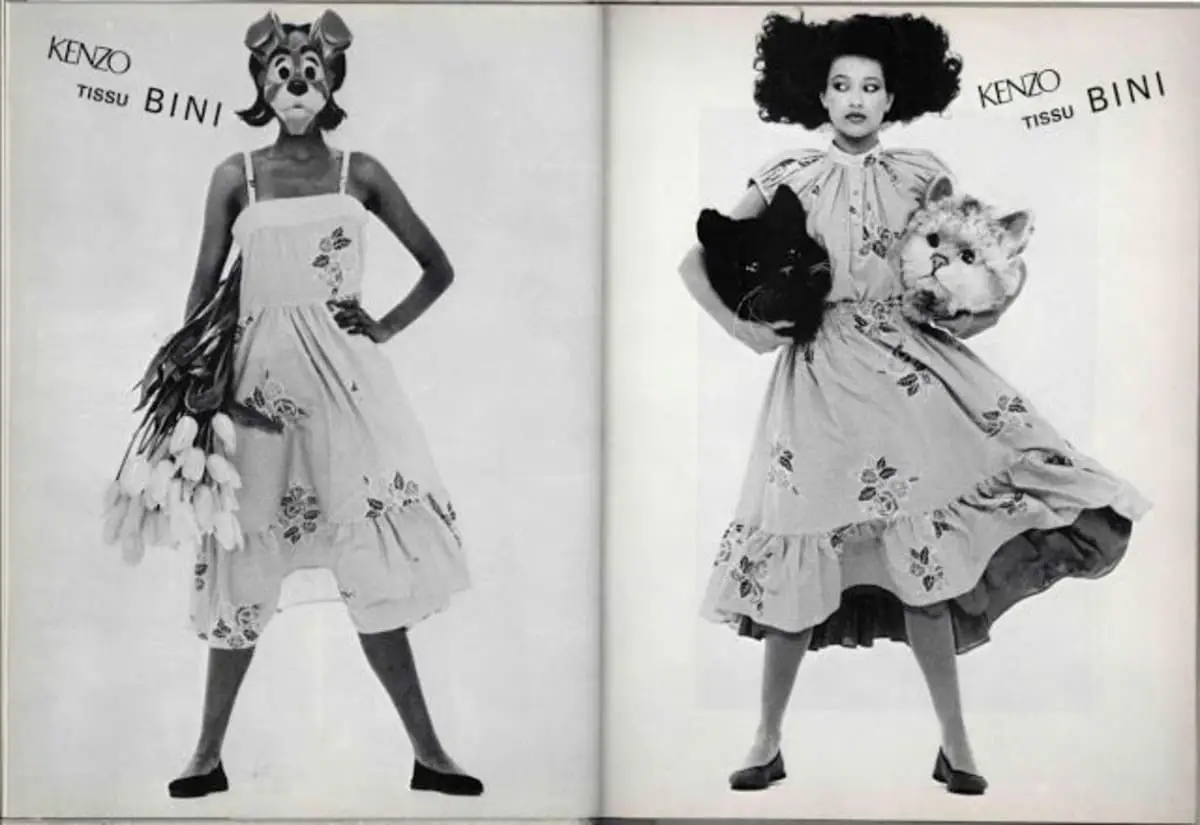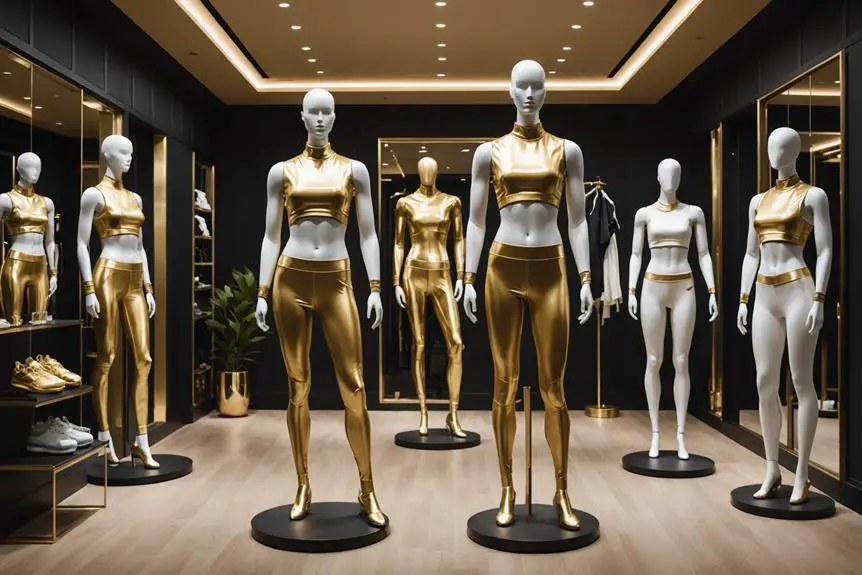The vibrant story of Kenzo, the iconic French luxury fashion house, is a testament to the visionary genius of its founder, Kenzo Takada. Since its establishment in 1970, Kenzo has evolved into a beacon of eclectic fashion, known for fusing Japanese influences with Western aesthetics in ways that are both innovative and timeless. The journey from Takada’s jungle-inspired boutique in Paris to the global powerhouse under the LVMH umbrella is a compelling narrative, marked by bold experimentation and fearless creativity. The brand’s evolution reflects not just shifts in fashion but also in culture, creativity, and identity.
Takada’s early designs for Kenzo brought a fresh, unconventional look to European fashion with his signature loose-fitting garments and playful, nature-inspired motifs. From the initial “Jungle Jap” boutique to the distinctive “Kenzo Paris” branding that followed, the brand swiftly gained a reputation for breaking boundaries. Takada’s bold move to reimagine traditional silhouettes with Asian-inspired elements resonated deeply with both the American and European markets. This daring blend of cultures set the stage for Kenzo’s expansive growth throughout the 1980s and 1990s, which saw the introduction of men’s, kids’, and home collections, as well as fragrances.
Kenzo’s trajectory into the 21st century was marked by a series of strategic changes, including creative direction under several notable designers. Each left their own imprint on the brand while staying true to its core philosophy of embracing vibrant colors, bold prints, and a global outlook. From Gilles Rosier to Antonio Marras, and later to Carole Lim and Humberto Leon, Kenzo adapted to the times while cultivating a devoted following. This adaptability helped the brand remain relevant and innovative, leading to successful collaborations with artists like David Lynch and a standout partnership with H&M.
Today, under the creative direction of Nigo, Kenzo continues to inspire a new generation with a blend of high fashion and streetwear. The house remains rooted in its signature ethos of playful elegance, with an expanding global presence and a diverse range of products that cater to the evolving tastes of contemporary consumers. Whether through its timeless logo evolution, innovative collections, or cultural impact, Kenzo’s legacy endures.
Kenzo World Film
How to tell if Kenzo is vintage from the logo
Kenzo is a luxury fashion house founded by Kenzo Takada in Paris in 1970. Renowned for its eclectic designs and vibrant prints, the brand has gained a reputation for blending Japanese and Western aesthetics. Over the decades, the Kenzo logo has undergone several transformations, each reflecting changes in the brand’s vision and adapting to contemporary trends while maintaining its distinct identity.
From bold geometric forms to sleek, modernist typography, the evolution of the Kenzo logo marks significant phases in the brand’s history. Each iteration captures a specific era, contributing to the brand’s recognizability and its impact on fashion culture. Here’s a chronological overview of how the Kenzo logo has evolved over the years.
1983 to 2013 Kenzo logo
- The logo features a bold, geometric style with distinct angular shapes.
- Its typography is simple yet striking, emphasizing the brand’s modern aesthetic.
- The color palette is primarily black and white, lending an elegant, timeless appeal.
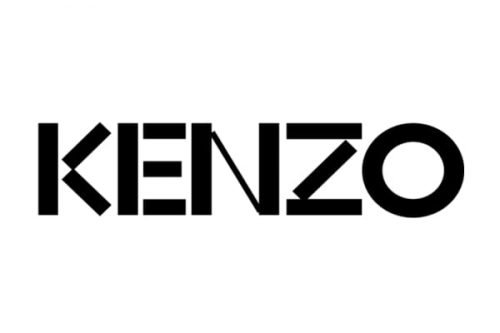
1983 to 2013 Kenzo logo
2013 to 2020 Kenzo logo
- Introduces concentric lines for each letter, creating a distinctive striped look.
- The “Paris” text is added within the “O” in a circular style, enhancing the global identity of the brand.
- Reflects Kenzo’s creative and playful spirit through its unique visual identity.
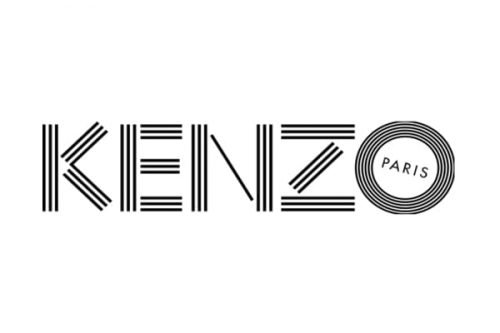
2013 to 2020 Kenzo logo
2020 to 2022 Kenzo logo
- Reverts to a simpler design with thicker, blocky typography and prominent lines.
- The letters are closer together, offering a more compact and bold appearance.
- This version reflects a modern take on the brand’s heritage and aesthetic.

2020 to 2022 Kenzo logo
2022 to now Kenzo logo
- Returns to a more traditional format, combining the “KENZO” typography with a rectangular red background.
- “Paris” is added underneath in a refined, sans-serif font, offering a balanced contrast.
- Represents a blend of classic Kenzo design with contemporary elegance.
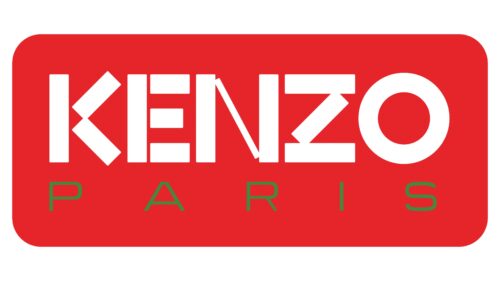
2022 to now Kenzo logo
How to tell if Kenzo is vintage from the tags
Kenzo, established by Kenzo Takada in 1970, embodies a vibrant fusion of Japanese aesthetics and Western fashion. From its inception, the brand’s eclectic prints and playful designs have made it a staple in the world of high fashion. Each era has brought a unique style to Kenzo’s clothing labels, making them a valuable tool for identifying the vintage period of a garment.
The tags range from the adventurous “Jungle Jap” era to the more modern Kenzo Paris labels, evolving in color schemes, typography, and additional brand indicators. Below, we’ll outline the distinctive characteristics of Kenzo tags from each decade to help you accurately identify your vintage Kenzo piece.
Confused by your vintage tags or labels? Upload a picture on our vintage tag identification page, and we’ll help you out!
1970s vintage Kenzo tags
- Frequently used “Jungle Jap,” an earlier brand name of Kenzo, and often adorned with bold lettering.
- Rectangular tags featuring various designs, including simple yet vibrant red and white “Kenzo Paris” tags.
- Creative and playful tags like “Kenzo for Sadimara” with a fan illustration, or “Album by Kenzo,” showcasing the experimental spirit of the decade.
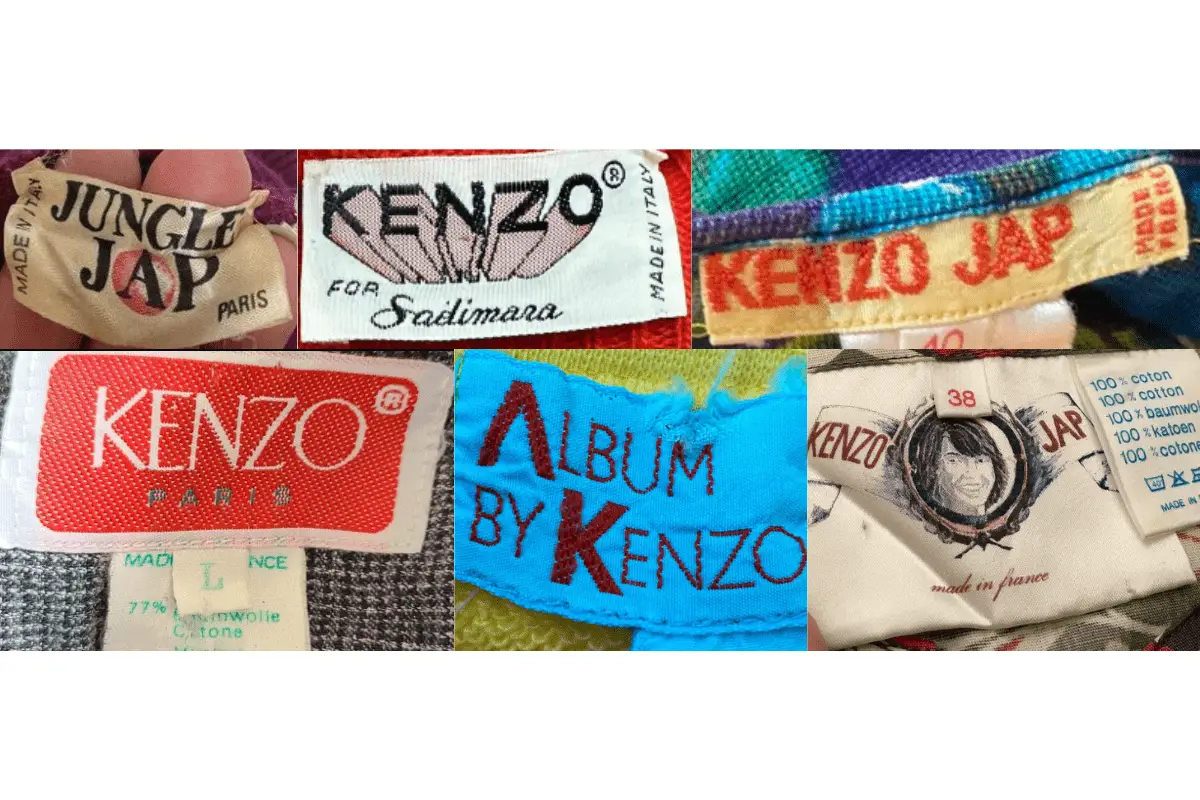
1970s Kenzo tags
1980s vintage Kenzo tags
- Shift to “Kenzo Paris” branding with modernized lettering and various colors like red and green.
- Featured smaller tags highlighting country of origin, “Made in France,” and material details.
- Unique “Jungle” tags used to reflect Kenzo’s nature-inspired motifs.
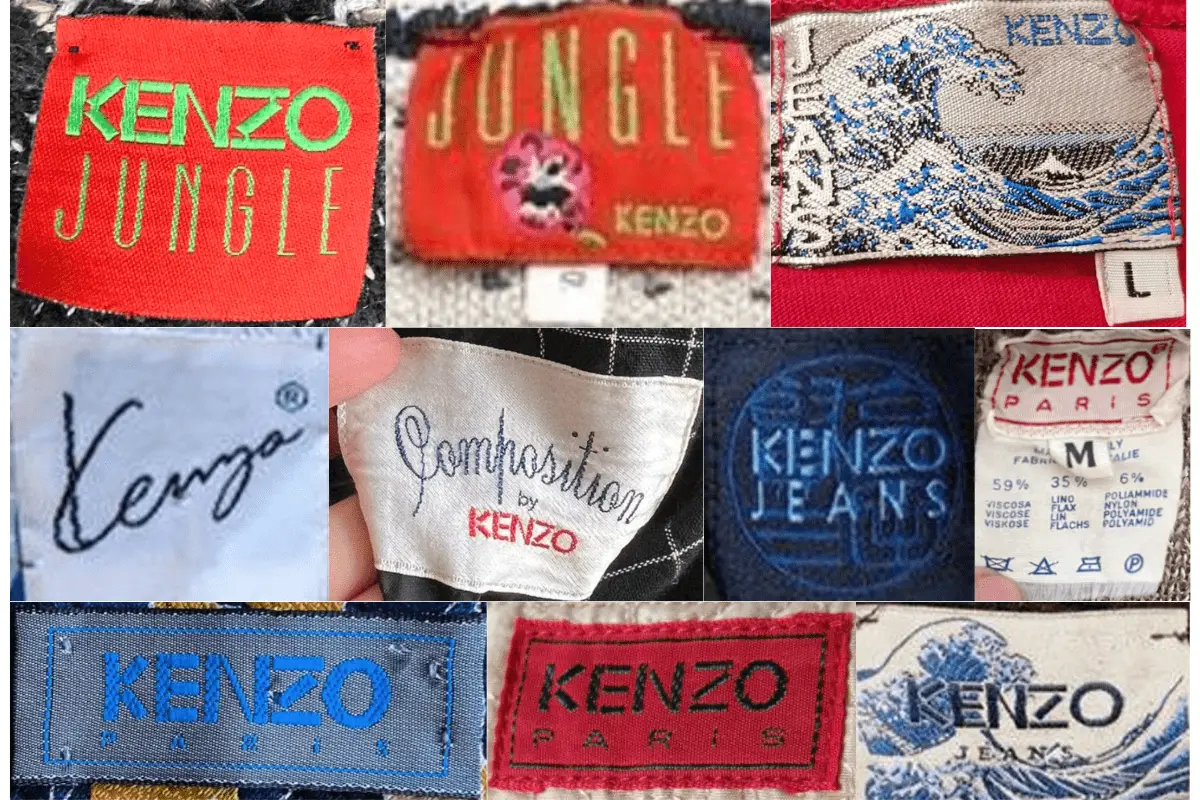
1980s Kenzo tags
1990s vintage Kenzo tags
- Bold “Kenzo Paris” and “Kenzo Homme” tags in primary colors, paired with distinctive size indicators.
- Introduction of “Kenzo Jeans” tags, adorned with intricate wave illustrations.
- Experimentation with various fonts and tag styles for different lines like “Composition by Kenzo.
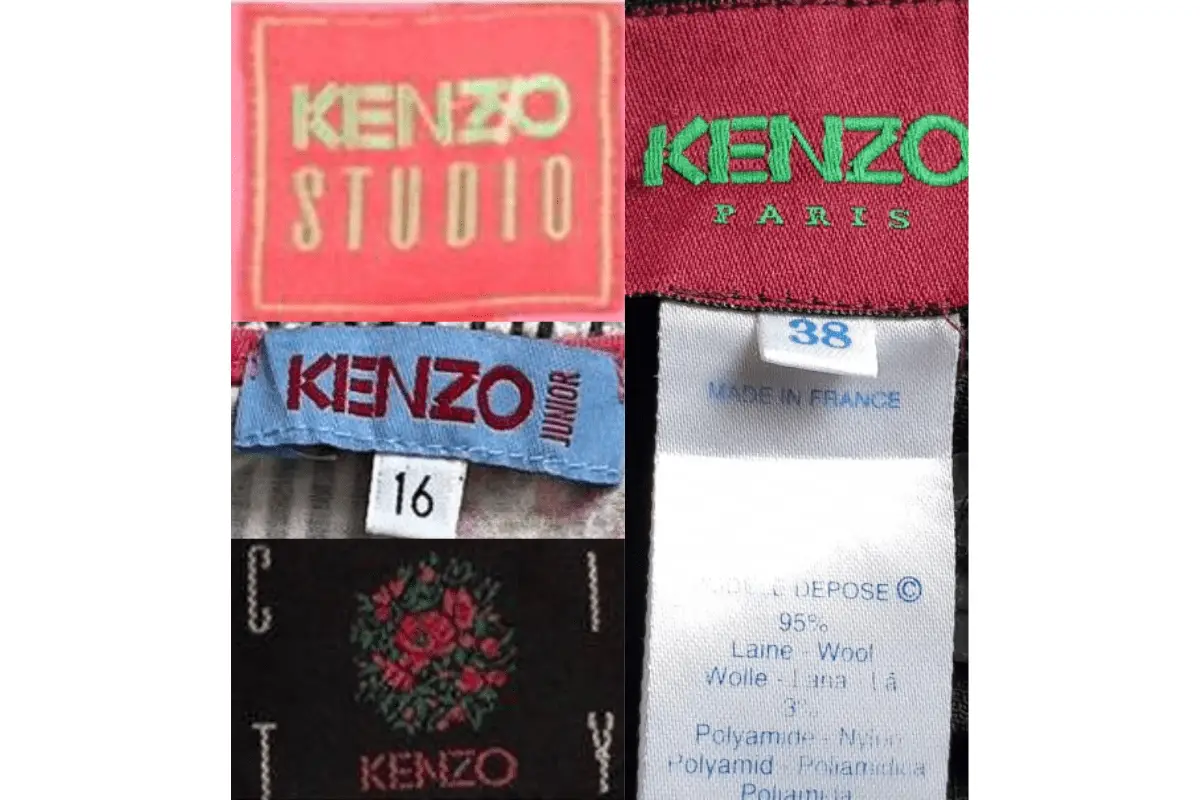
1990s Kenzo tags
2000s vintage Kenzo tags
- More modern “Kenzo Paris” tags in bold and streamlined typography.
- Various sizes and styles, with some indicating “Kenzo Homme” in the men’s line.
- Enhanced emphasis on standardized fonts and clearer size information.
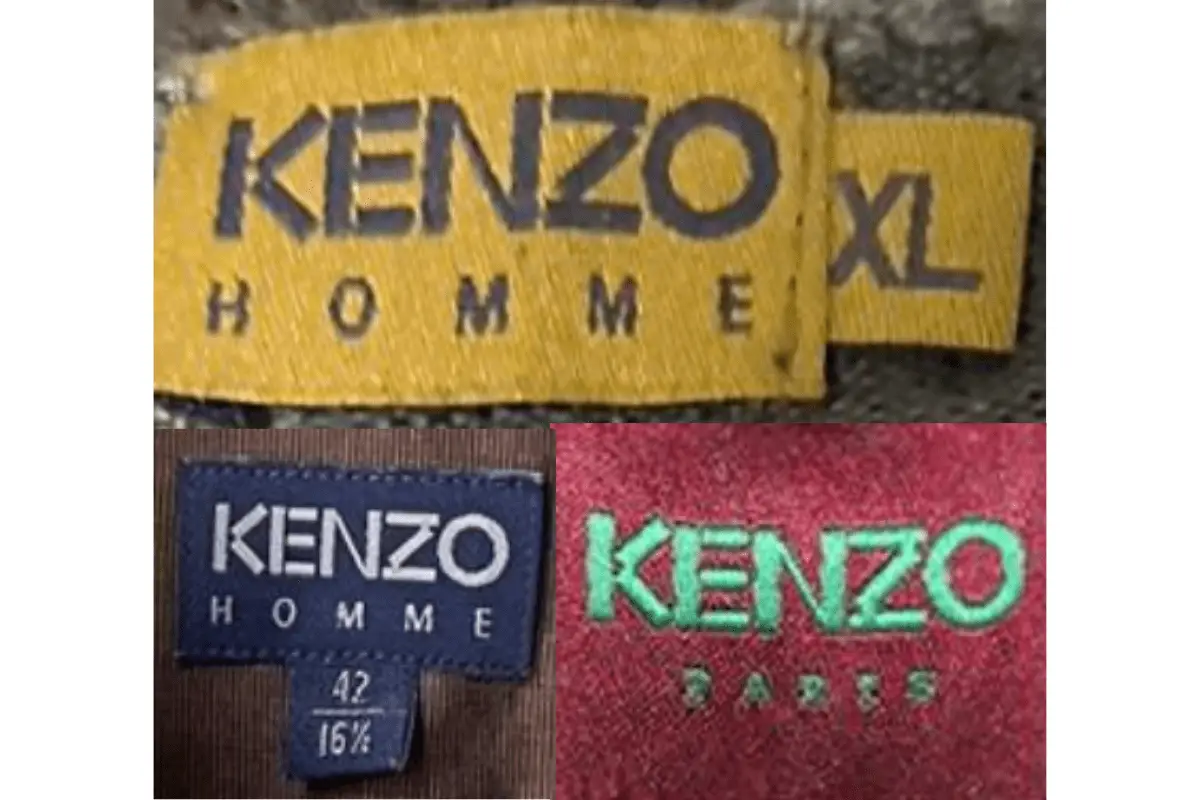
2000s Kenzo tags
2010s vintage Kenzo tags
- Modernized Kenzo Paris tags with cleaner and more streamlined designs.
- Looped tags offering a new presentation, often in bright, contrasting colors.
- Clear material and care information tags reflecting standardized global production locations like Portugal.
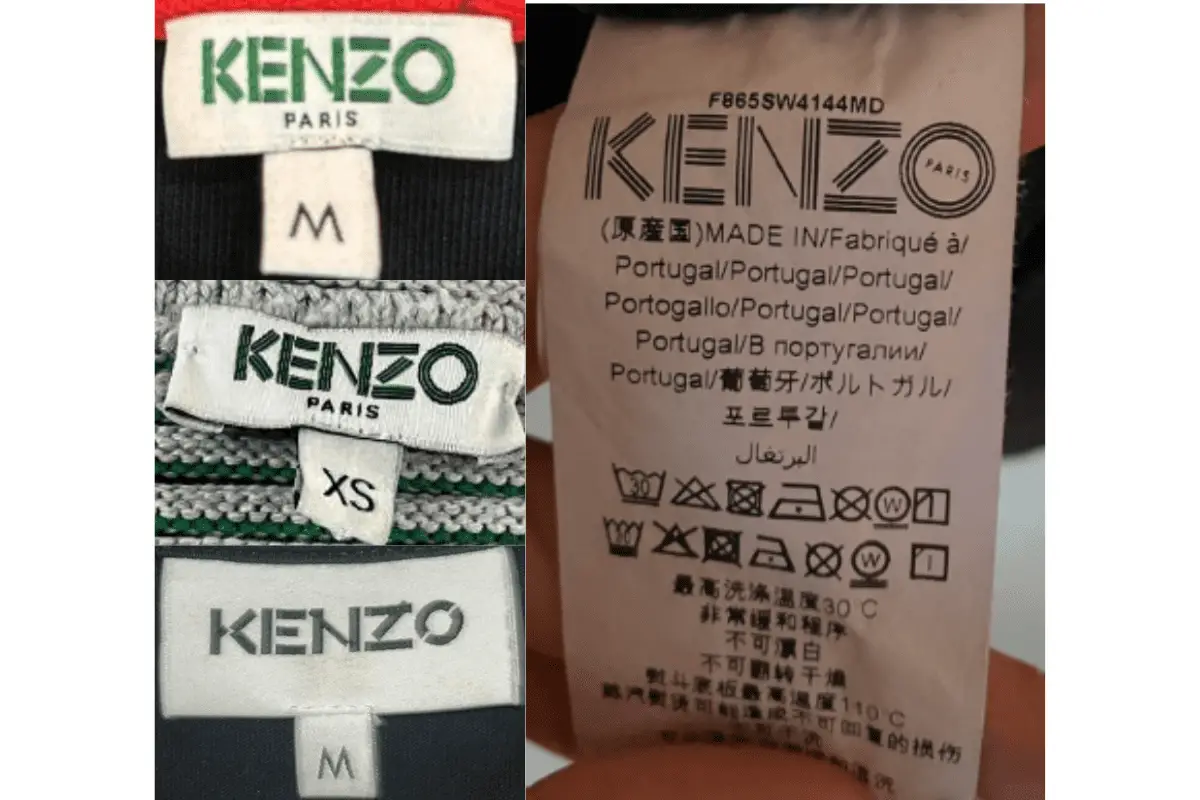
2010s Kenzo tags
